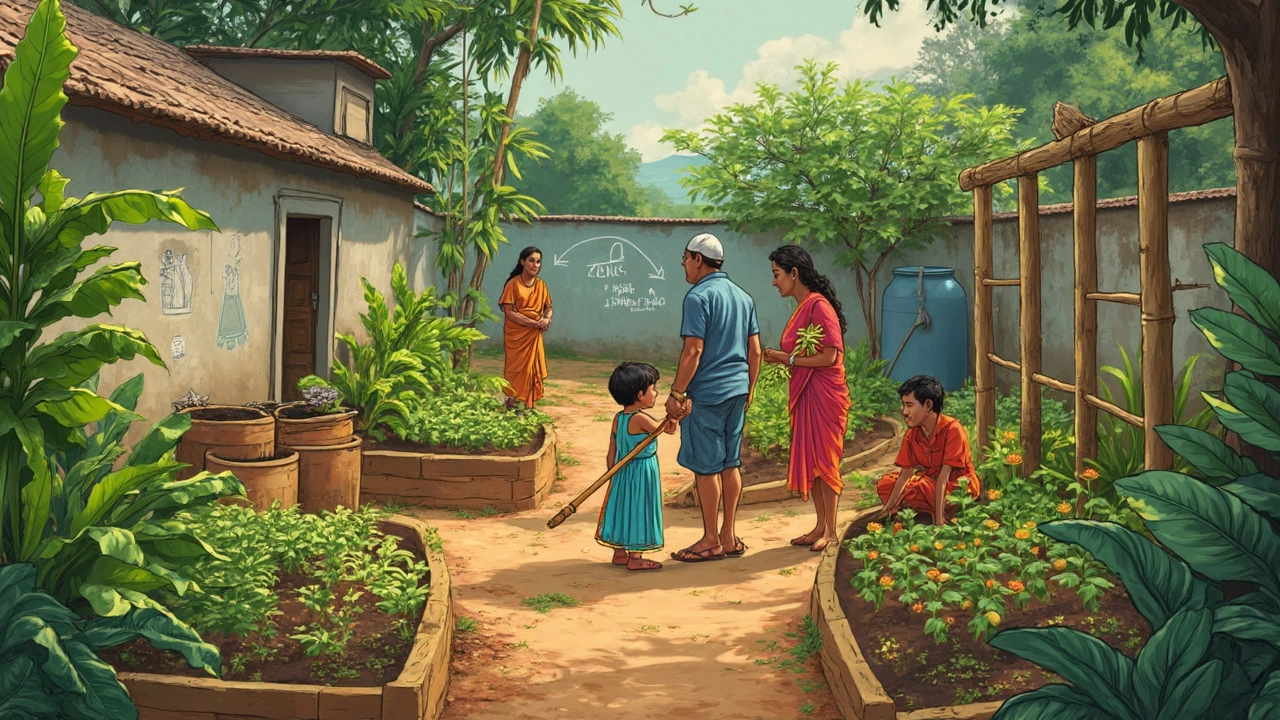Breaking Up a Garden: How to Refresh Your Soil and Boost Plant Growth
When working with Breaking Up a Garden, the process of loosening compacted soil, clearing old debris, and resetting beds for better plant health. Also known as garden renewal, it sets the stage for stronger roots, richer yields, and a more enjoyable gardening experience. Breaking up a garden isn’t just about digging—it’s a strategic step that connects to several key practices you’ll encounter across the articles below.
Why Soil Health Matters and How to Restore It
One of the first entities linked to garden renewal is Soil Health, the measure of soil’s ability to support plant life, retain water, and host beneficial microbes. Healthy soil means better water retention, fewer weeds, and robust plant growth. When you break up compacted ground, you’re creating air pockets that let roots breathe and water flow freely. Adding organic matter—like kitchen scraps or well‑rotted compost—feeds microbes, turning dead material into nutrients. This aligns with the advice in our "How to Rehydrate Garden Soil" guide, where you learn quick fixes for dry, hard soil, and the "No‑Till Gardening" article that shows how preserving soil structure can still improve fertility over time.
Another vital piece is No‑Till Gardening, a method that minimizes soil disturbance while building organic matter on the surface. While it sounds opposite to breaking up a garden, the two can work together: you might initially loosen severely compacted areas, then switch to a no‑till approach to maintain the newly created structure. This hybrid strategy reduces erosion, conserves moisture, and promotes a thriving microbial community.
Once the soil is open and fertile, managing water becomes critical. That’s where Drip Irrigation, a low‑pressure, precise watering system that delivers water directly to plant roots shines. After breaking up a garden, installing drip lines under mulch helps the freshly loosened soil stay moist without waste. Our "Drip Irrigation Under Mulch" post details how to combine these tools for maximum efficiency, while the "Should I Water My Container Garden Daily?" guide reminds you to test moisture before over‑watering.
Finally, the process ties neatly into Composting, the controlled decomposition of organic waste into nutrient‑rich soil amendment. By incorporating compost into newly broken beds, you accelerate soil regeneration and give plants an immediate nutrient boost. The "Most Expensive Plant in India" article even notes how premium growers rely on high‑quality compost to justify premium prices.
By understanding how soil health, no‑till practices, drip irrigation, and composting intersect, you can approach garden renewal with a clear roadmap rather than a guess‑work plan. Below you’ll find a curated selection of articles that walk you through each step—whether you’re rehydrating dry soil, setting up a drip system, or choosing the easiest flowers to grow in your refreshed beds. Dive in and turn your garden overhaul into a thriving, low‑maintenance haven.
Breaking Up a Large Garden: Step-by-Step Guide to Reimagining Your Outdoor Space
Learn practical, creative ways to break up a large garden. Transform big, overwhelming spaces into beautiful, usable zones with these landscaping tips.
- manufacturing
- India
- food processing
- garden tips
- rice cultivation
- government schemes
- balcony garden
- urban gardening
- balcony gardening
- profitable business
- business ideas
- plastic manufacturing
- drip irrigation
- plant care
- steel manufacturing
- sustainable gardening
- startup ideas
- steel industry
- flower gardening
- textile manufacturers






